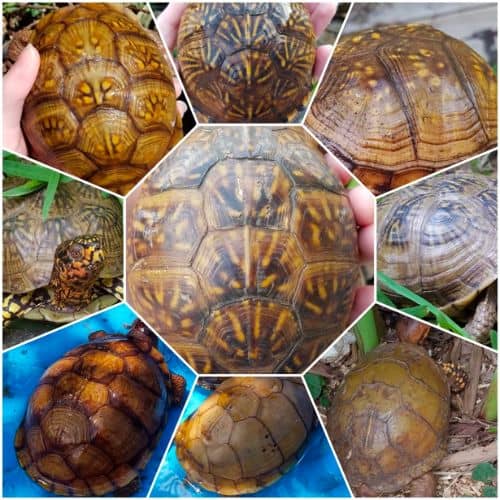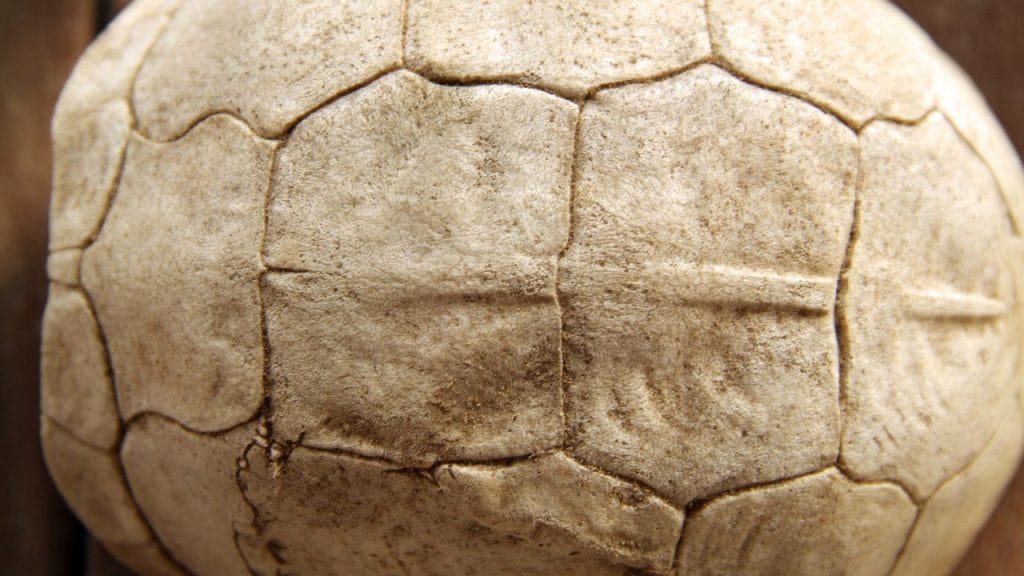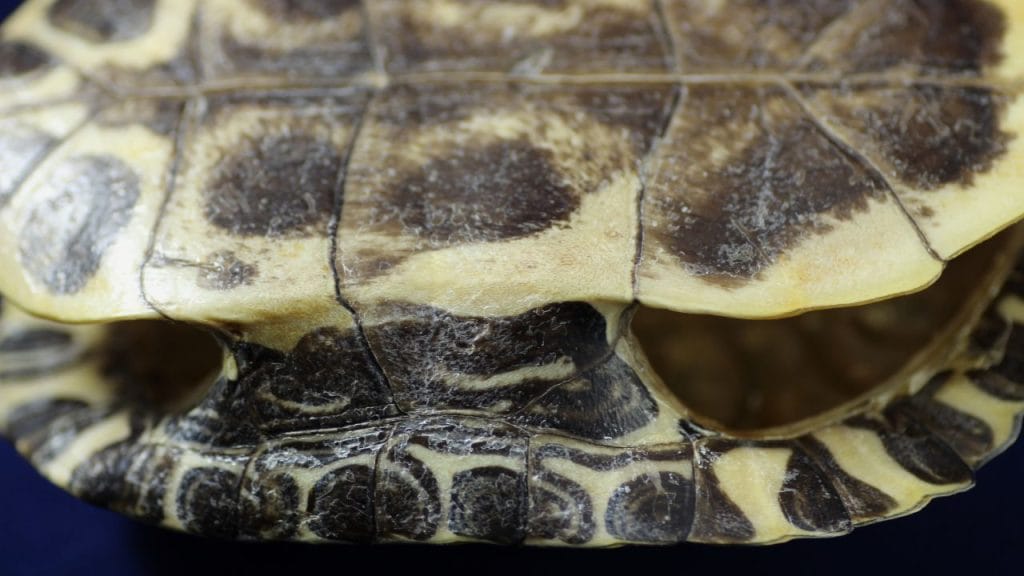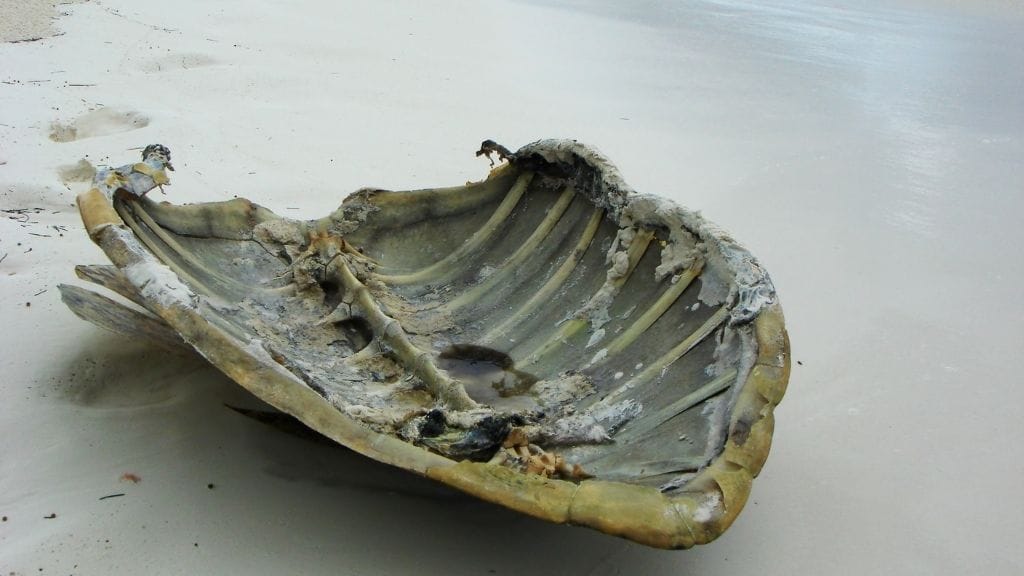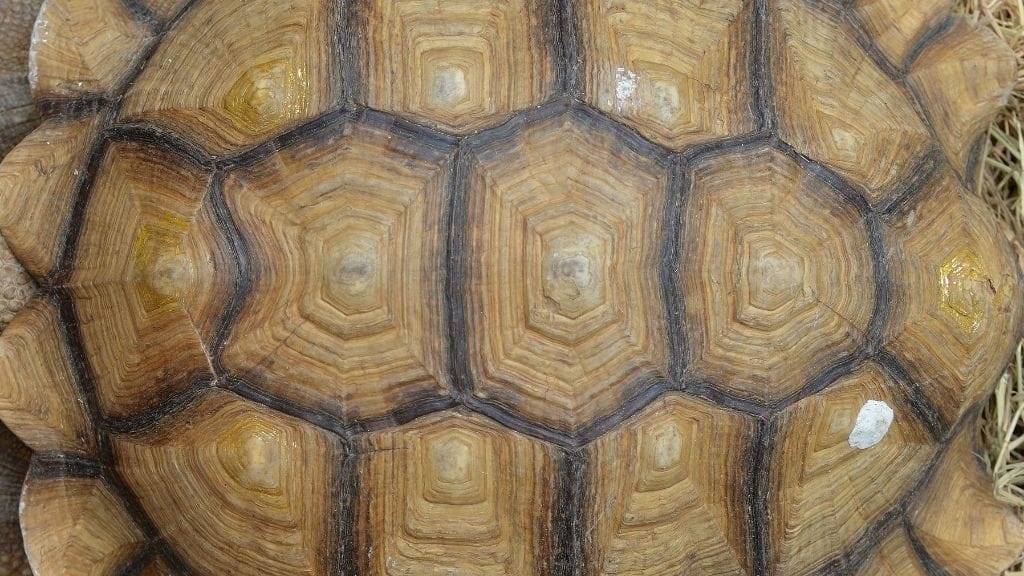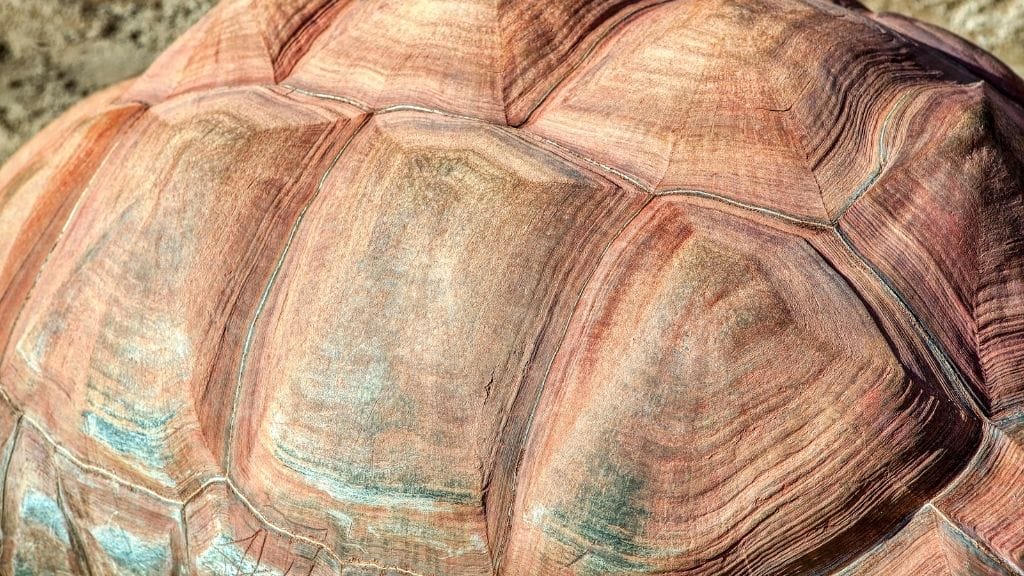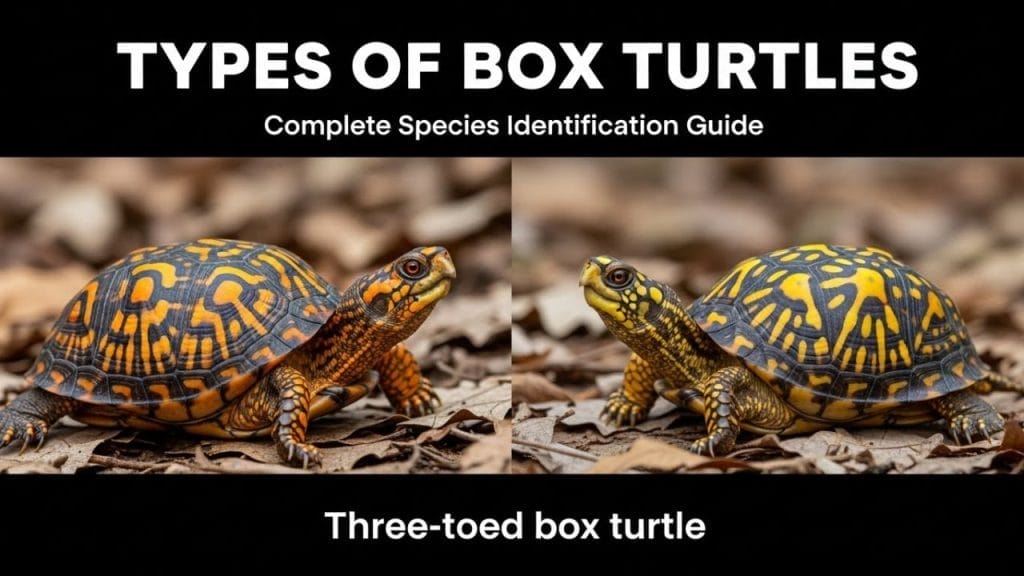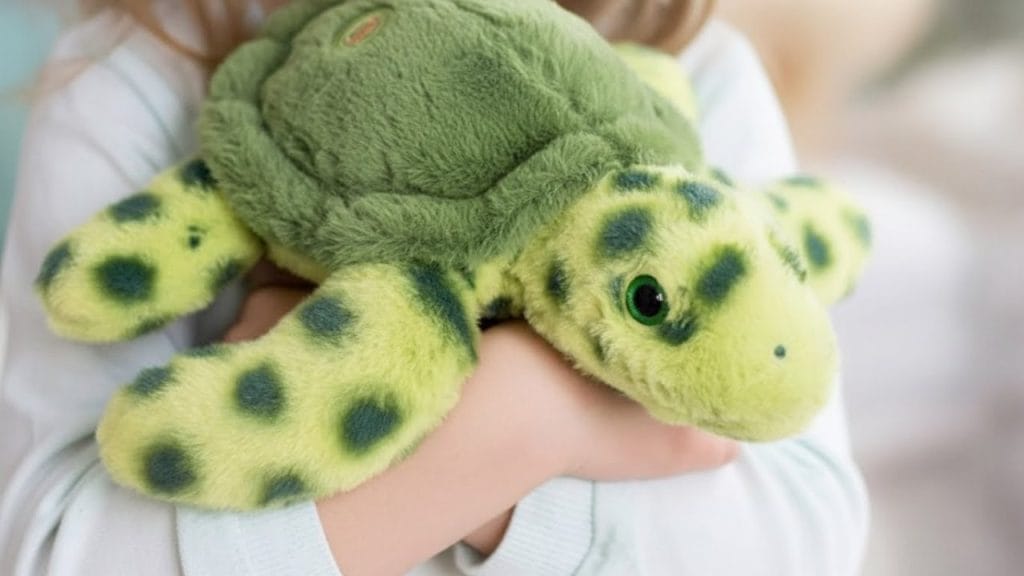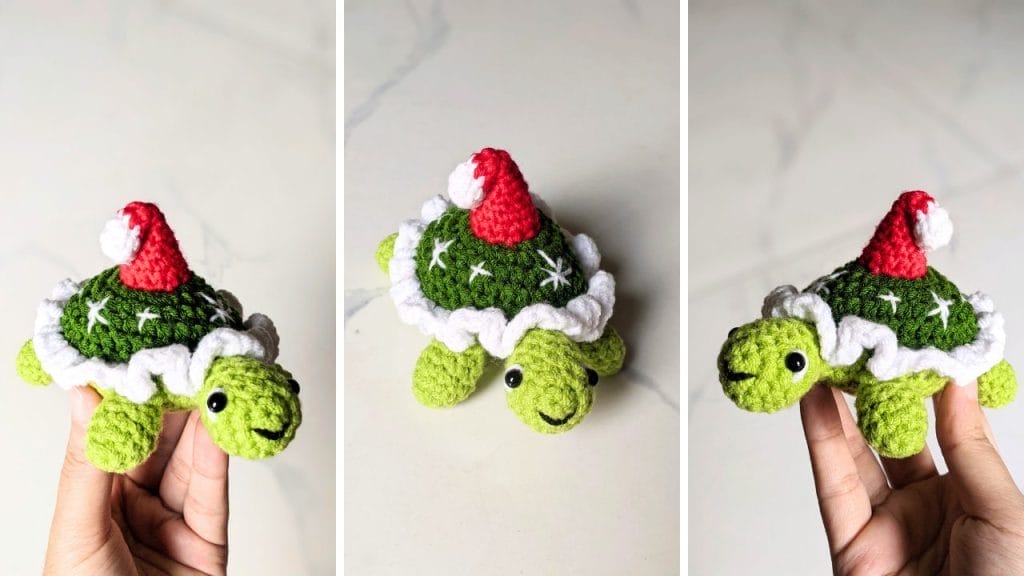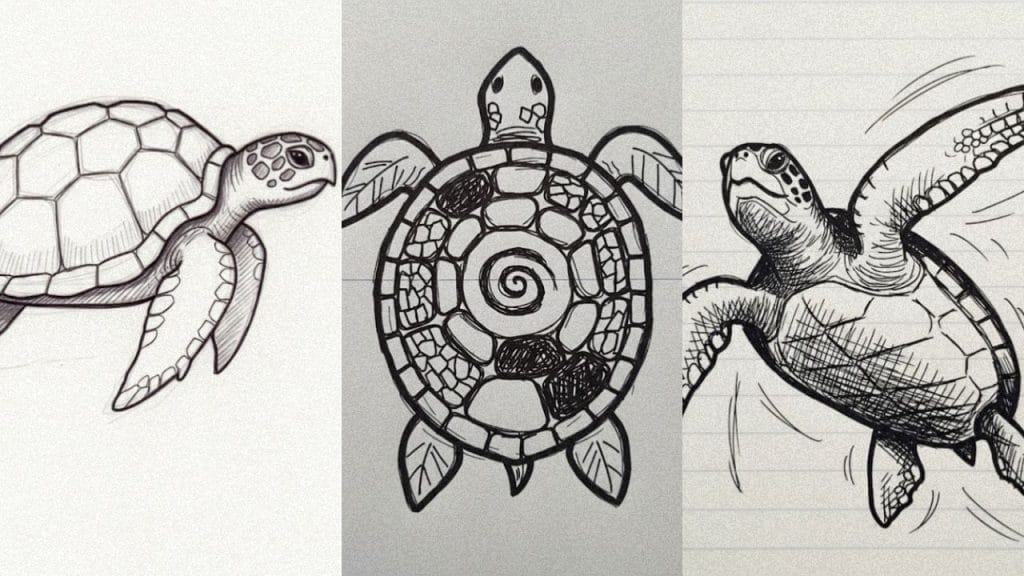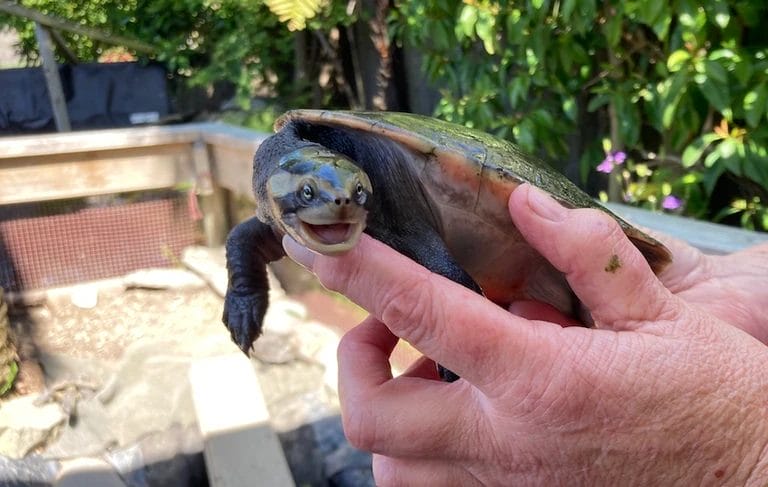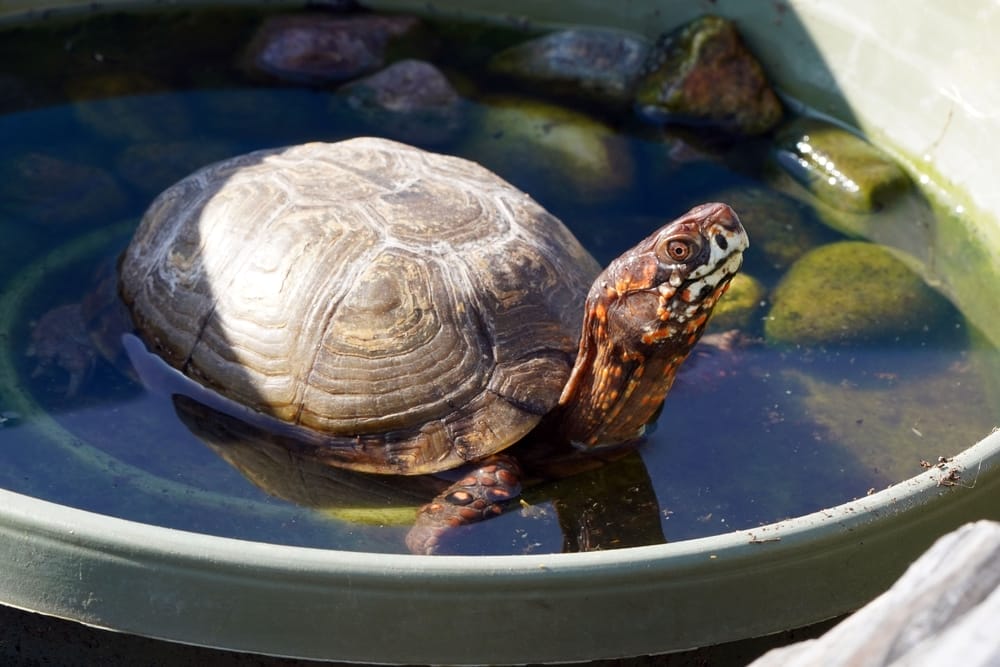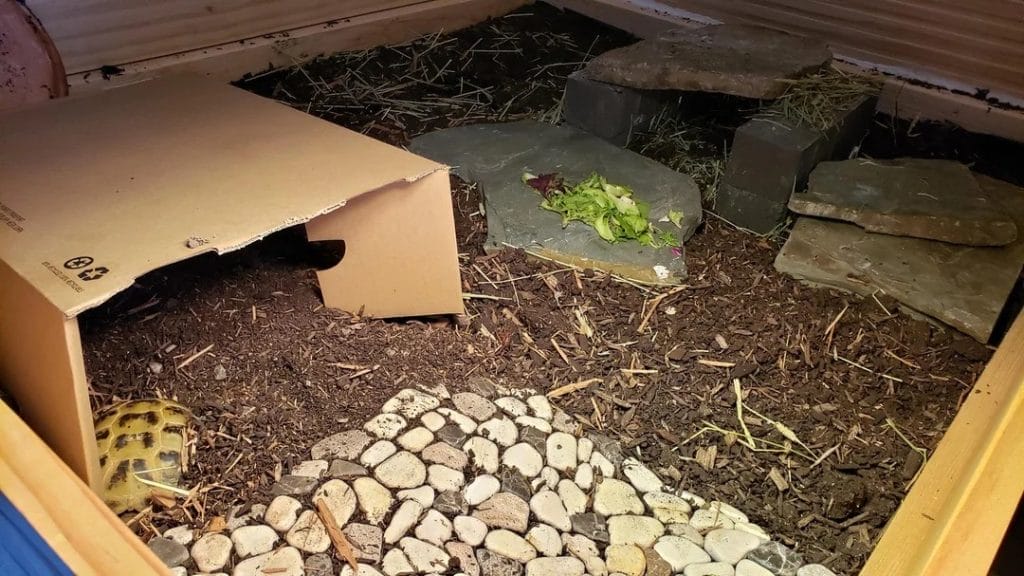Red Eared Slider Shell Problems & How to Treat Them
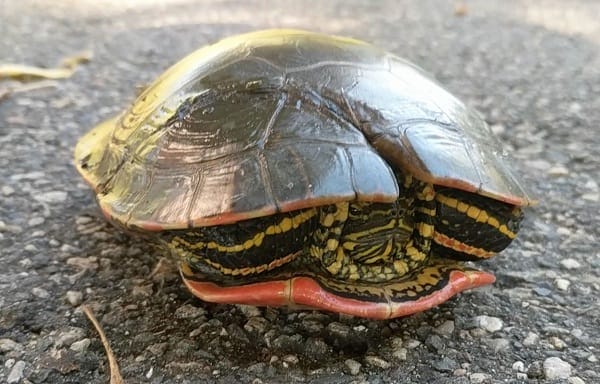
This post was created with help from AI tools and carefully reviewed by a human (Muntaseer Rahman). For more on how we use AI on this site, check out our Editorial Policy.
Over the last few decades, red eared slider turtle is gaining popularity as an ideal pet. When you adopt a red eared slider as your pet, it is your responsibility to take great care of it. That drives you to learn more about the diseases a red-eared slider can face.
Why you need to learn all these? Well, having a minimum knowledge will help you to avoid some critical conditions. Moreover, you can treat your red eared slider on your own if the disease is not severe.
This sector is so immense that I cannot cover in one article. So in this article, I will explain red eared slider shell problems and how to treat them. Try reading the full article, it will help you, for sure.
What does an unhealthy turtle shell look like?
An unhealthy turtle shell can manifest various signs and symptoms, indicating potential health issues. Here are some common indications of an unhealthy turtle shell:
Soft Shell: A turtle’s shell should be hard.
If you notice that parts of the shell are soft to the touch, it could be a sign of a condition called metabolic bone disease (MBD).
This disease is often caused by a lack of calcium in the diet, lack of UVB light exposure, or both.
Pyramiding: This is a condition where the scutes (the individual sections of the turtle’s shell) begin to rise in a pyramid-like shape. It’s often caused by an improper diet, especially one that is too high in protein or lacks the necessary vitamins and minerals.
Discoloration: Any unusual discoloration, such as white, yellow, or black spots, can be a sign of fungal or bacterial infections. Algae growth can also cause a greenish discoloration.
Foul Odor: A healthy turtle and its shell should not emit a foul odor. If you notice a bad smell coming from the shell, it could be a sign of shell rot or another infection.
Cracks or Fractures: While minor cracks can heal on their own, deep cracks or fractures can be serious and require immediate attention. They can be caused by physical trauma or accidents.
Shell Rot: This is a fungal or bacterial infection of the shell. It can appear as soft, mushy areas on the shell, often accompanied by a foul odor. In severe cases, there might be pus or a discharge.
Algae Growth: While some algae growth is normal, especially for turtles that spend a lot of time in water, excessive algae can be a sign that the turtle isn’t basking enough or that the water quality is poor.
Uneven Growth: If one side of the shell is growing faster than the other, or if there are irregular bumps and lumps, it could indicate a potential health issue.
Presence of Parasites: Sometimes, leeches or other parasites can attach to a turtle’s shell. Regularly inspecting the shell can help in early detection and removal.
The Shell Problems A Red Eared Slider Face:
- Cracked Shell
- Shedding
- Holes on Shell
- White Patches on Shell
- Shell Rot/ SCUD
- Soft Spots on Shell
- Black Spots on Shell
- Soft Shell
This Hilarious Turtle Book Might Know Your Pet Better Than You Do
Let’s be real—most turtle care guides feel like reading a textbook written by a sleep-deprived zookeeper.
This one’s not that.
Told from the snarky point of view of a grumpy, judgmental turtle, 21 Turtle Truths You’ll Never Read in a Care Guide is packed with sarcasm, sass, and surprisingly useful insights.
And hey—you don’t have to commit to the whole thing just yet.
Grab 2 free truths from the ebook and get a taste of what your turtle really thinks about your setup, your food choices, and that weird plastic palm tree.
It’s funny, it’s honest, and if you’ve ever owned a turtle who glares at you like you’re the problem—you’ll feel seen.
1. Cracked Turtle Shell:
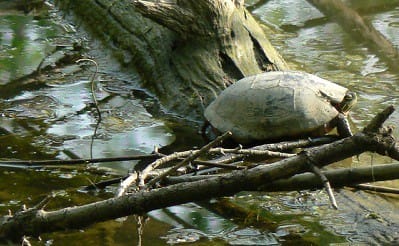
Turtle’s shell seems very strong from the point of a viewer. But the reality is, it can be damaged.
When one part of a turtle’s shell gets snapped by massive force, this phenomenon is known as Cracked Shell.
In most cases, a red eared turtle survives cracked shell situation if it is not severe.
Why Cracked Shell Condition Happens To A Red Eared Slider?
Three main points are responsible for this condition of a red eared slider.
- If your red eared slider falls on his/her shell from a considerable height, there is a high possibility of shell cracking.
- If a car or any massive force hits your turtle, his/her shell can get cracked.
- Wildlife attacks on a turtle also open the possibility of shell cracking.
What Will You Do If Your Red Eared Turtle Has A Cracked Shell?
For repairing your turtle’s shell, you must take it to a vet. Don’t worry. It’s not always severe, but for healing the cracking, your red eared slider may require authorized medication.
In case you are confident about it, carefully follow the instructions given below. (Consulting to a vet is highly recommended. If you need to contact with a turtle vet, check out our Turtle & Tortoise Vet Directory: All 50 States. It will be only a matter of time before you can contact with an experienced turtle vet from your state)
Healing Material:
Many materials are available that can repair the turtle’s cracked shell. The most used materials are epoxy resin and fiberglass patch.
If these two materials are unavailable, you can use dental acrylic plastics, colored polyester resins, and hoof repair compounds.
All these materials are available in the hardware or dental or hobby shops. You will also need transparent gauge and wires.
Process Of Fixing Shell:
- Wipe the wound with a dilute suspension. You can apply 3% hydrogen peroxide, povidone-iodine solution, or Nolvasan.
- Now let the solution dry on the shell. It is essential to dry the wound because healing adhesive or material needs a dry surface.
- Now use the healing material to seal the crack.
The sealing method may differ depending on the kind of the burst.
For example:
Patch Method:
If the shell breaks into small parts, you have to apply the patch method. You can use dental acrylics as a patch.
- First, you roughen the sides of the wounds with a sandpaper or nail file. Don’t hurt your red eared slider in the process. Make sure the shell dust cannot enter into any cracking.
- Prepare the patch by following the directions written on its packet. Make a flat patch and put it on the defect. Remember not to coat the edges with the suspension, and not to fill the crack with it.
If The Cracks Are Linear:
- Clean the lines with dilute solutions and let them dry.
- Drill two small holes on both sides of the shell and put a stainless wire through it. Use the tiniest drill bit possible.
- Clean and dry the surface again. Use Tegaderm as an adhesive dressing to protect the wound.
- It will take a few weeks for your red eared slider to recover. Do not let your pet to submerge into the water.
If The Cracks Are In Bridge Area:
The bridge area is more sensible compared to any other part. You can apply both patch or wire method for this kind. If anything goes wrong, it will make your red eared slider more vulnerable.
Some Important Points:
- Protect open shell crackings from flies, and dust.
- You have to keep the wound clean.
- Check your red eared slider can use his/her limbs or not.
- For young turtles, this process is a bit tough, but not a problem for adult turtles.
- Consult with your vet regularly. I highly recommend to perform these surgeries or steps under professional observation.
2. Turtle Shell Shedding
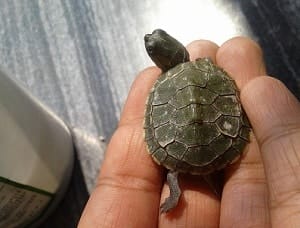
What Is Shedding?
If you have minimum knowledge about turtles’ anatomy, you must know they have 60 bones in their shell. Epithelium, a thin layer, cover the scutes and imparts hardness to it.
Turtles tend to grow new layers of epithelium and wear off the old one. The phenomenon is known as shedding, and is common among sea turtles.
Shedding can also be dangerous, but that depends on the kind of turtle and its health.
Why Abnormal Shedding Happens To Red Eared Slider?
The condition is also known as Dysecdise. It has a bad impact on your pet’s shell, which makes it look vulnerable.
- Shell rot and other diseases can lead your pet into Dysecdysis.
- Abnormal shedding can happen to your red eared slider if you overfeed it. Well, many think overfilling your pet turtle is a part of care. It is not correct, rather it may drive your turtle into critical health issues.
- Severe injuries on the shell can also cause abnormal shedding.
- If you let your red eared slider bask in a heated place, the turtle may face this medical condition.
- Too low temperatures also cause abnormal shedding to the red-eared slider.
- Bacterial or fungal attacks created a high possibility for the turtle to suffer this disease.
- If the water in the tank contains high ammonia, the red-eared slider may suffer from abnormal shedding.
What Are The Possible Treatments For Abnormal Shedding?
The treatment of abnormal shedding depends on the severity and cause of the condition. If you are an amateur, I suggest you take your red eared slider to an expert/vet. It is because you will not be able to find the cause of the problem accurately.
Again, some minor changes in habit can reduce the possibility of it.
- Keep your red eared slider away from sharp and heavy things.
- Keep the temperature in the tank constant.
- Maintain an excellent quality tank for your pet. Check regularly if the filter is working fitly or not.
- Maintain a healthy diet for your red eared slider.
- Clean your turtle with proper dilute solution, and take steps if you notice any sign of shell rot.
How Can We Prevent Abnormal Shedding In Red Eared Slider?
Well, we can only try to keep our turtles safe from any accident. There is no proper prevention of this disease. But maintaining all the steps mentioned above may help you to keep your red eared slider protected from abnormal shedding disease.
3. Holes On Turtle Shell
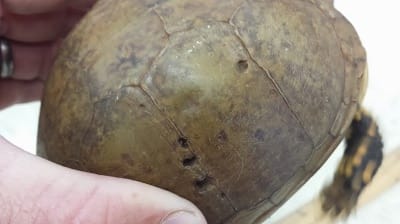
What Is ‘Holes On The Shell?’
Like many other medical illnesses, holes on the shell/scutes is a condition some red eared sliders face. In this condition, you may notice small or big holes on the shell of your red eared slider depending on the severity. In extreme cases, you may observe red bloodlines surrounding the holes.
Why Holes On Shell Happens To Your Red Eared Slider?
We can consider two points responsible for this disease:
- Appearing holes on the shell can be a result of any previous injury or wound. Neglecting a proper diet can also be responsible for this.
- Bacterial or fungal attack can be another reason for these shell holes.
How To Treat Your Red Eared Slider If It Has Shell Holes?
If the condition is worse, take your red eared slider to the vet. If not, then follow the advice mentioned below:
- Take your red eared slider out of the water.
- Keep your turtle in a dry and warm place.
- Soak your pet with water for thirty minutes twice a day. It will keep your red eared slider hydrated. You can use Betadine or Nolvasan solution for soaking.
- Continue doing it for several days.
- Put your red-eared slider on a proper diet.
4. White Patches On The Turtle Shell
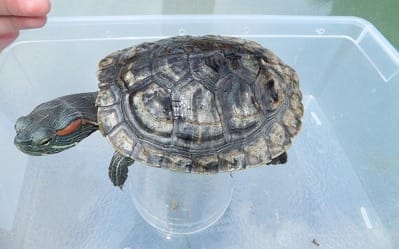
It may not be uncommon to see white spots or patches on your red eared slider’s shell. You will notice these spots mostly on baby or young red-eared sliders. Why this happens, and how you can recover your turtle from these spots.
Let’s see.
Why Are White Spots Or Patches On The Red Eared Slider?
Well, there are two reasons for this condition.
- Young or baby red eared sliders show white spots before shedding. So this can be a sign that they are growing.
- White patches can be a sign of fungal infection or scars from previous wounds.
A Way Of Recovery From White Patch Problem:
If it is an infection, you can apply home-made treatments on your red eared slider.
- First, dry the shell carefully.
- Apply silver sulfadiazine cream on the patches or spots.
- You can apply betadine solution on the spots too. But make sure to dry the solvent on the shell.
- Continue this process for a few days.
- If you do not observe any improvement, try consulting with a vet as soon as possible.
5. Turtle Shell Rot/ SCUD
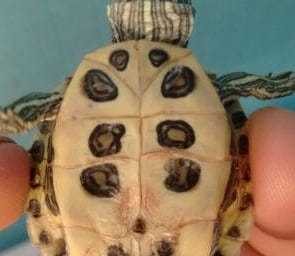
SCUD means Severe Ulcerative Shell Disease or shell rot.
I have illustrated Shell Rot, its reason, symptoms, and treatment in my previous article. You can check it out here.
6. Soft Shell/Soft Spots On Turtle Shell
Soft Shell on the red eared slider is a critical medical condition. It is also known as MBD or Metabolic Bone Disease. Many people do not understand the disease. So they fail to take any practical action for their turtle.
Why Does This Happen To A Red Eared Slider?
Soft Shell is a natural process for the turtles to grow. Before or after shedding, you may observe soft shell. But if the condition comes with other symptoms, and happens to adult red eared sliders, then it is MBD. We will know the symptoms later. Let’s discuss the reasons behind MBD first.
- Calcium is essential for your turtle. Calcium and Phosphorus ratio should be 2:1 in each diet. If there is insufficient calcium in your red eared slider’s nutrition, it will suffer from MBD.
- Besides calcium, Vitamin D is a must, because without Vitamin D, calcium cannot work. It can cause soft shell problem to your pet.
- Turtles need light to manufacture nutrition from its food. So if your red eared slider does not get enough sunlight, bulb light, or any light, there is a high possibility it will suffer from MBD.
- Excess phosphorus is harmful to one’s health. If your red eared slider gets excess phosphorus from any source, it will fall in MBD disease.
Symptoms Of Soft Shell:
- Change in your red eared slider’s movement or behavior sometimes indicates MBD. It is necessary to observe your pet’s swimming pattern and daily routine. If you know its natural response, finding any abnormal reaction will be easy for you.
- The red eared slider looks tired all the time, and cannot climb out of the water quickly.
- Turtle’s jawline gets floppy. It cannot bite anything easily.
- The red eared slider may suffer constipation because of MBD.
Treatment And Prevention For Metabolism Body Disease:
MBD is not a critical situation to treat. If the condition is not dangerous, you can manage your red eared slide your own.
- You have to improve the red eared slider’s regular diet. Add sufficient calcium and vitamin D.
- Give it proper sunlight. If you cannot manage that, arrange UVA and UVB lights of precise wavelength.
- Maintain the temperature of the water.
Your red eared slider will recover soon if you follow these instructions.
In severe cases, you must take your red eared slider to a vet. The vet may prescribe the turtle calcium, vitamins, or other minerals. Follow the prescription and do regular check-ups.
7. Black Spots On The Turtle Shell:
A red eared slider can have black spots on its shell for two reasons.
- It can be a bacterial or fungal attack.
- It can be the aftereffect of Shell Rot.
In both cases, you should follow the treatment of shell rot. Here you can check my article on shell rot.
How do you take care of a red eared slider shell?
Red-eared sliders are popular aquatic turtles, and taking care of their shell is crucial for their overall health. Here’s how you can ensure the health and well-being of a red-eared slider’s shell:
Proper Diet:
- Feed them a balanced diet that includes commercial turtle pellets, which are formulated to provide all the necessary nutrients.
- Supplement their diet with leafy greens like romaine lettuce, dandelion leaves, and kale. Avoid iceberg lettuce as it has little nutritional value.
- Occasionally offer them protein sources like mealworms, crickets, and small fish.
- Calcium supplements can be provided to ensure shell health. Cuttlebone is a popular choice.
UVB Lighting:
- Red-eared sliders need UVB light to metabolize calcium and maintain a healthy shell.
- Ensure they have access to a UVB light source for 10-12 hours a day if they are kept indoors. Replace UVB bulbs every 6-12 months or as recommended by the manufacturer.
Basking Area:
- Provide a dry basking area where the turtle can completely get out of the water. This helps the shell dry out, reducing the risk of fungal and bacterial infections.
- The basking area should have a heat lamp to help them regulate their body temperature.
Clean Water:
- Regularly change the water in their tank to prevent the buildup of waste and bacteria.
- Use a good quality water filter to keep the water clean between changes.
- Avoid using chlorinated tap water directly. Use a water conditioner or let the water sit for 24 hours before adding it to the tank.
Regular Shell Inspections:
- Check the shell regularly for any signs of discoloration, soft spots, cracks, or other abnormalities.
- Gently brush the shell with a soft toothbrush during water changes to remove any algae or debris.
Avoid Overfeeding:
Overfeeding can lead to rapid growth and pyramiding of the shell. Feed them only the amount they can consume in about 15-20 minutes and remove any uneaten food.
Maintain Proper Water Temperature:
The water temperature should be kept between 75-80°F (24-27°C) for adults and 78-82°F (25-28°C) for hatchlings.
Treat Injuries Promptly:
If you notice any cracks, injuries, or signs of infection on the shell, consult a veterinarian. Early intervention can prevent complications.
Limit Handling:
Handling can stress the turtle and increase the risk of injury. Handle them only when necessary, such as during tank cleanings.
Regular Vet Check-ups:
It’s a good idea to have your red-eared slider examined by a reptile veterinarian periodically to ensure its overall health.
Can Red-Eared Sliders Go Inside Their Shell?
You should know that not all turtles can get inside their shell. So, can red-eared sliders go in their shell? The answer is yes.
Red-eared sliders can pull their head, legs, and tail inside their shell.
This important aspect of their anatomy provides them with protection from predators and other threats. The shell of red-eared sliders is a bony structure covering its back, sides, and belly. It has layers of keratinized scutes that make the shell shard.
These scutes are joined together by flexible skin and muscles. Thus, the turtles are able to move their limbs and withdraw them into its shell when necessary. When a red-eared slider turtle feels threatened, it retracts its head, legs, and tail into its shell for protection. This way red-eared sliders protect themselves from danger.
Red Eared Slider: Different Parts Of The Shell
Turtle Shell Cracked On Bottom: What To Do?
If your turtle’s plastron (the bottom part of the shell) is cracked, it’s essential to address the situation promptly to prevent potential complications. Here’s what you should do:
Keep the Turtle Dry
Initially, keep the turtle out of the water to prevent bacteria and other contaminants from entering the crack. Set up a dry enclosure with a heat source to keep the turtle warm. Ensure the turtle has access to water for drinking.
Clean the Crack
Gently clean the cracked area with a mild antiseptic solution like diluted betadine or chlorhexidine. This will help prevent infection. After cleaning, you can apply an antibiotic ointment (like Neosporin) to the crack. Avoid using ointments that contain pain relievers, as these can be toxic to turtles.
Consult a Veterinarian
It’s crucial to take your turtle to a veterinarian, preferably one who specializes in reptiles or turtles, as soon as possible. The vet can assess the severity of the crack and determine the best course of action.
This might include stabilizing the crack with a patch or even surgical intervention in severe cases. The vet can also prescribe antibiotics if there’s a risk of infection.
Monitor for Infection
Even with treatment, there’s a risk of infection. Keep an eye out for signs of infection, such as redness, swelling, pus, or a foul odor coming from the crack.
Provide Proper Care
Ensure that the turtle’s environment is clean and free from potential hazards that could cause further injury. Maintain proper water quality, temperature, and lighting in the turtle’s enclosure. Feed a balanced diet to support healing.
Avoid Handling
Limit handling to reduce stress and prevent further injury. Only handle the turtle when necessary, such as during cleaning or treatment.
Recovery Period
Depending on the severity of the crack, the turtle may need a recovery period where it’s kept in a dry enclosure. Follow the veterinarian’s recommendations regarding when it’s safe to reintroduce the turtle to its aquatic environment.
why is my turtle’s shell turning red?
A turtle’s shell turning red can be concerning and may indicate several potential issues. Here are some reasons why a turtle’s shell might turn red:
1. Septicemia (Blood Poisoning)
One of the most serious reasons for a red hue on a turtle’s shell is septicemia, which is a systemic bacterial infection. The redness is due to blood vessels becoming inflamed or filled with bacteria.
Symptoms may include lethargy, refusal to eat, swelling in the limbs, and red streaks on the skin or shell.
Immediate veterinary attention is required if septicemia is suspected.
2. Poor Water Quality
Turtles that live in aquatic environments can develop shell discoloration due to poor water quality. High ammonia or nitrite levels, often resulting from infrequent water changes or overfeeding, can lead to skin and shell issues.
3. Algae or Bacterial Growth
Sometimes, the red coloration might be due to the growth of algae or bacteria on the shell. This is more of a surface issue and can often be cleaned off.
4. Injury or Trauma
Physical injuries, such as scrapes or cuts, can cause redness or bleeding underneath the shell. Such injuries can become infected if not treated promptly.
5. Natural Coloration
Some turtles might naturally have a reddish hue to their shells, especially when they are young. This is more common in certain species or individual turtles.
6. Exposure to Certain Substances
If the turtle’s enclosure has decorations or substrates that leach color, it might stain the turtle’s shell. Ensure that all items in the turtle’s environment are non-toxic and safe for use.
why is my red eared slider shell turning white?
A red-eared slider’s shell turning white can be due to several reasons:
Shedding: Turtles naturally shed the outer layer of their scutes as they grow. Before shedding, scutes may appear whitish.
Fungal/Bacterial Infections: White, soft, or fuzzy patches can indicate an infection, often resulting from poor water quality or lack of UVB exposure.
Poor Water Quality: High ammonia or nitrite levels can cause shell discoloration. Regular water changes and a good filtration system are essential.
Mineral Deposits: Hard water can leave whitish mineral deposits on the shell. These can be brushed off during cleaning.
Lack of UVB Exposure: Turtles need UVB light for calcium metabolism and shell health. Ensure they have access to UVB light or natural sunlight.
Dietary Issues: An imbalanced diet can lead to shell abnormalities. Ensure a balanced diet with essential vitamins and minerals.
Algae Growth: Algae can sometimes appear whitish. A proper basking area helps reduce algae growth on the shell.
Conclusion
As I am still learning about more shell problems, you may find some shell conditions missing. In that case, let me know what I have missed. I tried to explain red-eared slider shell problems & how to treat them in simple words. I hope you find it helpful.

About Author
Muntaseer Rahman started keeping pet turtles back in 2013. He also owns the largest Turtle & Tortoise Facebook community in Bangladesh. These days he is mostly active on Facebook.


